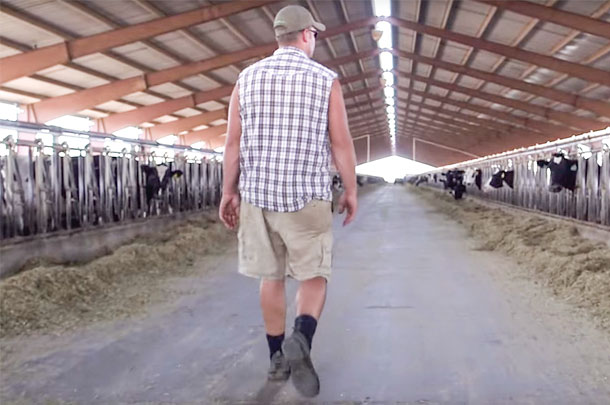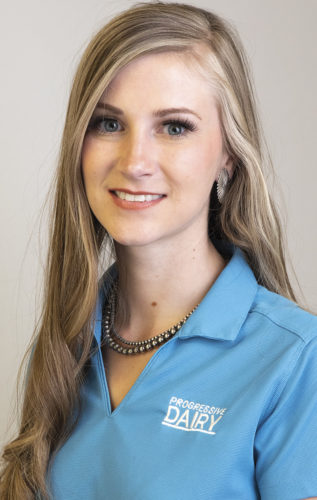Rumination and activity monitors now enable dairy farmers to track the health of individual cows on the farm. But are they worth their cost? Not in all cases, dairy owner and herd manager Kyle Van Dyk says.
When J&K Dairy in Sunnyside, Washington, tested rumination and activity monitors on 300 of its close-up and fresh cows, Van Dyk was pleasantly surprised to find his herdsmen were already addressing the majority of the issues the monitors were flagging. They noticed the problems and health issues simply by paying attention to the cows’ visual signs of illness.
“For me [the trial] was a lot of verification we are doing the job we are trying to do,” Van Dyk says.
Because of this, the dairy opted not to invest in monitoring technology for the entire herd.
“I believe we had most of all those areas already addressed before we put in the activity monitors to tell us what our problems were,” Van Dyk says. “Because we felt we already had everything buttoned up in those areas, we didn’t see a need for them on our dairy.”

Van Dyk sees the benefits of new technologies. However, he lives by the philosophy of being a student of the cow, and so far it has been just as impactful when it comes to understanding their needs.
“The focus here is to be a student of the cow,” Van Dyk says. “This is from a standpoint of just stepping back, understanding the cows and letting them speak to you to identify what their needs are.”
The number one aspect Van Dyk and his team monitor in his close-up and fresh cow pens is rumen fill. Other visual signs they take into account are whether a cow’s eyes are bright and perky or if the cow has a runny nose, droopy ears or slobber coming out of its mouth.
“If a cow is not eating, she is going to have no rumen fill, and she is going to be all sucked up,” Van Dyk says. “However, when you see a slight concave in her rumen, this means she is still eating and still ruminating, but her intake is not high enough.”
A shot of B vitamin and a rumen microbial pill are administered to promote rumen activity and stimulate appetite if a cow is found with low feed intake.
Van Dyk believes dairymen can visually see if a cow has an issue at the same time a rumination monitor sends an alert just by watching rumen fill. As long as pens are tightly monitored and herdsmen are there who understand what they are looking for, Van Dyk says dairymen can be at par with what technology can do.
In the past, Van Dyk says his herdsmen used to only monitor the temperature of every fresh cow and would give therapy based on what the temperature was. In his opinion, this was causing problems where his herdsmen were missing a lot of obvious health signs because they were tuned in to just that one protocol.
“If you take that protocol away, it gives somebody who doesn’t truly care the opportunity to walk right by a cow,” Van Dyk says. “One thing I told my guys early on is to put their thermometer in their pocket and take their eyeballs out of their pocket.”
Today, Van Dyk’s workers monitor much more than just temperature. When the cows come back from the parlor to fresh feed, the stanchions are locked up so the herdsmen can go in and observe visual signs while the cows are eating. The goal Van Dyk has set for his workers is to be in and out of each pen in 20 minutes.
“The cows have a time budget, and it is very important we do not interfere with it,” Van Dyk says. “If we take too long to treat cows, we end up in the pen too long. That goes against my philosophy: The cow’s time is more valuable than the person’s time. As soon as we go over a designated goal for lock-up time, we are actually going backward in what we are trying to accomplish.”
On J&K Dairy, Van Dyk’s aim is to find employees who truly like working with cows.
“Maybe they don’t know everything about the cows, but they enjoy working with cows, and they have the passion for taking care of those cows,” Van Dyk says. “Now that is a person you can train to identify the little things the cow is trying to tell you before the thermometer is going to pick it up and before other methods are going to identify those cows with an issue.”
He said training workers to recognize visual signs and health issues takes a lot of individualized guidance to help them understand what is ideal and what is less than ideal.
“It takes a lot of one-on-one,” Van Dyk says. “Really, there is no system where you just give a few instructions and then they go out and do their job. Otherwise, you are sadly going to be disappointed in the job that gets done.”
The basis of his training consists of teaching the employees about cow handling, the cow’s flight zone and the simple concept of being quiet, slow and smooth.
“My approach is not an easy thing to adopt when most dairy workers are trained to hurry, hurry, hurry and get their jobs done,” Van Dyk says. “It is kind of reversing that and saying you need to slow down, you need to work with the cow, you need to be calm, and you need to be patient.”
While Van Dyk does teach his employees to be slow and be meticulous when working with cows, he says his overall health-check methods are fast and simple. ![]()
PHOTO 1: Instead of spending money on technology, being a student of the cow can be just as impactful when it comes to understanding their needs, Washington dairyman Kyle Van Dyk believes.
PHOTO 2: Kyle Van Dyk, a lifelong dairy farmer and herd manager at J&K Dairy, sees the benefits of new technologies; however, he lives by the philosophy of being a student of the cow. Photos provided by Christine Melby.

-
Audrey Schmitz
- Editor
- Progressive Dairyman
- Email Audrey Schmitz






